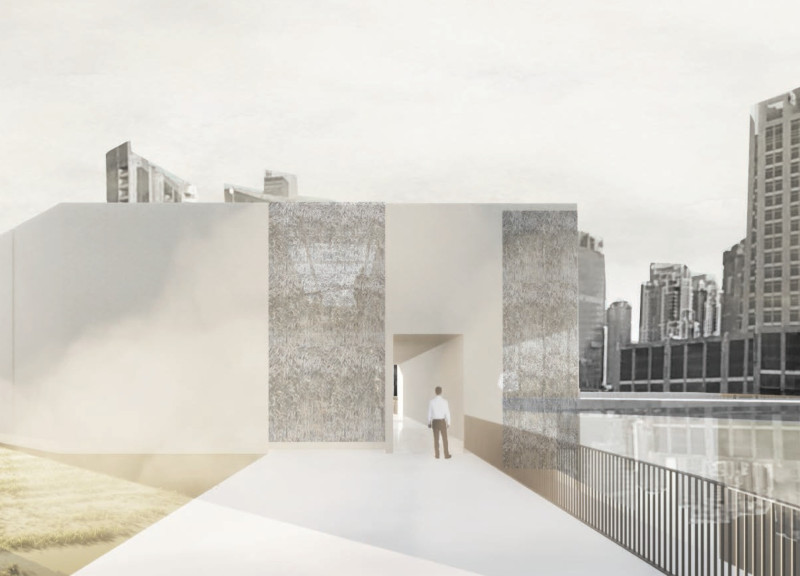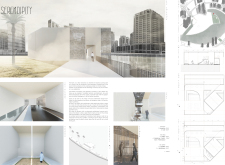5 key facts about this project
The Pavilion of Humanity is situated in Dubai, designed to engage visitors in an exploration of personal and emotional experience against the backdrop of modern technological advancements. The pavilion addresses contemporary challenges such as the COVID-19 pandemic and climate change, creating a space that emphasizes the importance of human connection and reflection. Its design encourages individuals to delve into their emotions and engage in meaningful contemplation.
Geometric Simplicity
Simple geometric forms define the pavilion’s architecture, providing clarity and accessibility for visitors. This straightforward design approach allows individuals to engage with the space comfortably. It invites exploration and encourages interactions that lead to deeper reflection on what it means to be human.
Materiality and Construction
The building is primarily constructed with prefabricated concrete, a choice that focuses on efficiency and sustainability. This material not only ensures structural stability but also allows for quick assembly. Its design promotes effective thermal performance, addressing the local climate and showcasing a responsible architectural response to environmental concerns.
Cultural Heritage
An interesting feature of the pavilion is its outdoor area, which is covered with a braiding of palm leaves. This design element serves to protect visitors from direct sunlight and connects to the region's architectural history. Traditional techniques used in Dubai since its early days are acknowledged here, creating a bridge between past and present while enhancing the visitor's experience.
Incorporating Sensory Experience
The Pavilion of Humanity prioritizes sensory engagement and aims to prompt conversations about the role of technology in everyday life. By focusing on emotional connections and individual reflection, the design offers an environment where people can navigate the complexities of modern existence. As visitors walk through the space, they encounter various elements that encourage them to reconnect with their innate humanity and consider their place in a technologically driven world.


















































